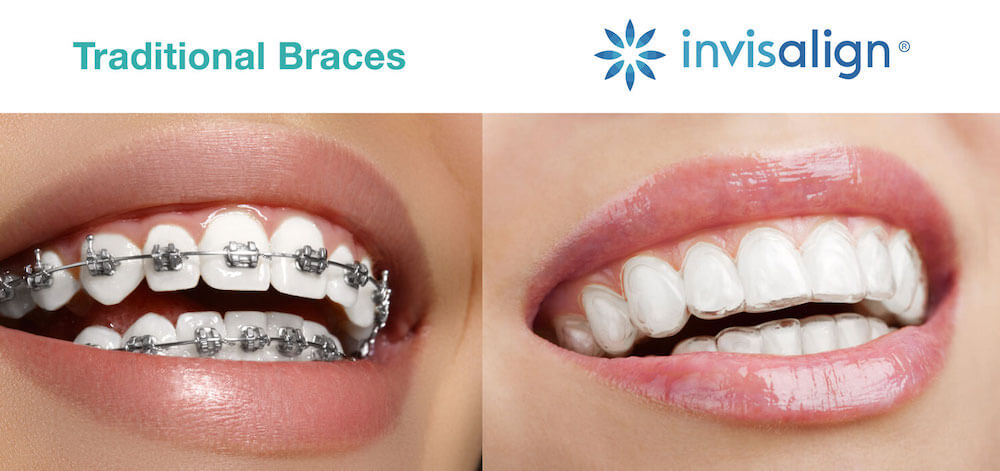Mother Teresa once said that “peace begins with a smile”. It’s amazing how a smile can lighten up someone’s day. That’s why you need to make sure your smile is at its best.
Conventional medicine looks to braces as the solution to crooked teeth. The emergence of Invisalign, however, has given braces a run for their money. Invisalign vs Braces is a common question in the minds of many dental patients.
While both treatment methods achieve the same desired results, the difference is in the process required to achieve those results. Read on to find out which orthodontic treatment is best for you.
Invisalign vs Braces
Without delving into the intricacies of what divides Invisalign and braces, it’s crucial that you identify (along with your dentist), why you will be undergoing orthodontic treatment. Orthodontic treatment can not only improve your looks but also improve your bite and keep your jaw muscles in optimal condition.
You may want to look into orthodontic treatment if you have (an):
- Overbite — can cause jaw pain and wear down teeth faster than usual
- Underbite — can create trouble while chewing food, biting, and speaking in addition to jaw pain
- Crooked Teeth
- Teeth Gaps
- Tooth Overlap
Now that you’re well informed as to why you may need to get orthodontic treatment, it’s time to investigate the Invisalign vs braces debate.
Braces: The Conventional Method
Braces work by using small brackets, usually made of metal or porcelain, connected with a wire to gradually tighten gaps or adjust teeth. While braces used to be much more noticeable, they have become more discreet in recent times.
The steady pressure put on your teeth by the braces gradually move your teeth into the desired position often specified by your dentist. The wire needs to be replaced every 6 to 8 weeks to ensure the braces are doing their job. Regular follow-ups with your dentist are crucial as they will determine whether you get the results you are looking for.
Do note that braces require excellent dental hygiene. You will have to brush your teeth after every meal, use an interdental brush to clean the space between the wire, gums, and teeth, floss at least once per day, and use mouth wash.
Invisalign: Past Meets Present
In a way, it could almost be said that Invisalign is a better alternative to braces. Taking a hard look at the facts does indeed reveal a simpler, more modern approach to braces.
Invisalign falls into the category of clear aligners. These aligners are transparent and removable, meaning that they are much more discreet than conventional braces.
Just as in the case of braces, Invisalign treatment also requires that patients have regular follow-ups with their dentist. Clear aligners must be swapped out every two weeks in addition to the follow-up appointments as part of the treatment process.
Oral hygiene is also a whole lot easier with Invisalign since the aligner is removable. Standard oral hygiene is still required in the form of regular brushing and flossing.
Pick Your Treatment
Neither treatment method is fun, but both have the same end goal in mind. Hopefully, this article has given you insight into the Invisalign vs braces debate.
If you value proven, time-tested oral treatment and don’t mind a different look, then braces may be right for you. However, if you value looks and don’t mind seeing your dentist a little more regularly then you may want to go for Invisalign.
If you’d like to learn more about Arrow Smile Dental, then make sure to head over to our webpage.

